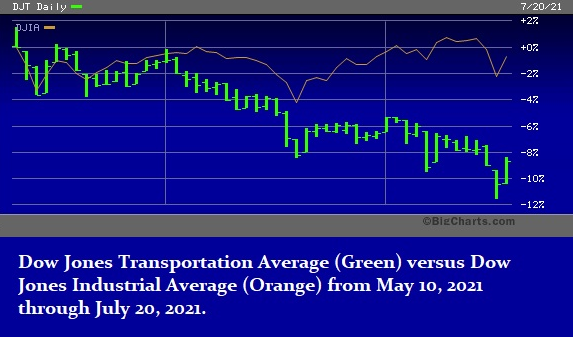Courtesy of Pam Martens
By Pam Martens and Russ Martens
The only time that tens of millions of Americans typically hear anything about the stock market on the evening news is when the S&P 500 Index sets a new high. That’s been happening a lot this year. For example, on June 30 it was widely reported that the S&P 500 had clinched its sixth record close for the year.
But beneath the surface of that cheerful sound bite, major deterioration in the underpinnings of the market has been taking place. For example, recently there have been more stocks on the New York Stock Exchange setting 3-month lows than setting three-month highs. The same is true for the Nasdaq stock market and dramatically so for the smaller companies that trade Over-the-Counter (OTC). These measurements gauge the “breadth of the market.” When new lows consistently trounce new highs, it can be a forewarning of a looming market correction.
Then there is the problem with the Dow Theory breaking down. Based on that theory, any long-term uptrend in the overall market requires that both the Dow Jones Industrial Average and the Dow Jones Transportation Average set new highs within a reasonable period of time of each other to confirm the upward trend. The thinking goes that if industrials are doing well, then the companies that ship those industrial products, the transports, should also be doing well. But as the chart above indicates, since May 10, the bottom has been falling out of the transports as the Dow Jones Industrial Average experienced little damage.
Next up is the yield on the bellwether 10-year U.S. Treasury note. While the financial media has been in a tizzy over the threat of inflation coming from an overheating economy, the yield on the 10-Year Treasury note has been behaving like a recession is just around the corner. Since April 1, the yield on the 10-year U.S. Treasury note has declined from 1.70 percent to a yield of 1.2 percent.
…




